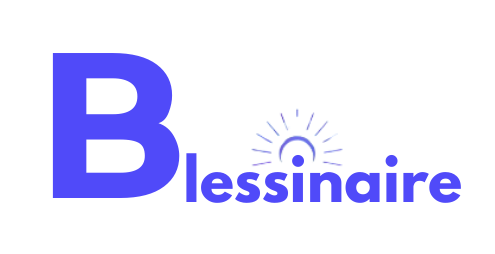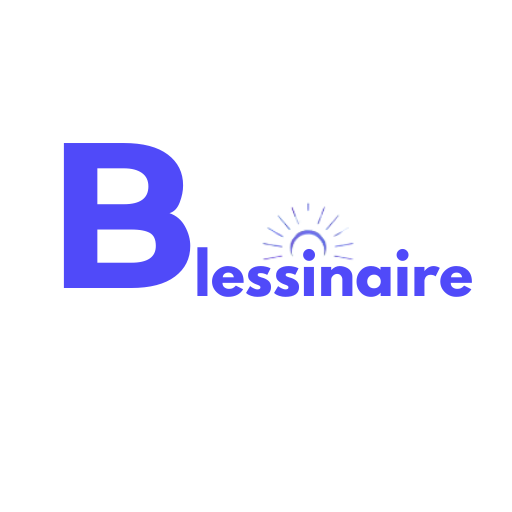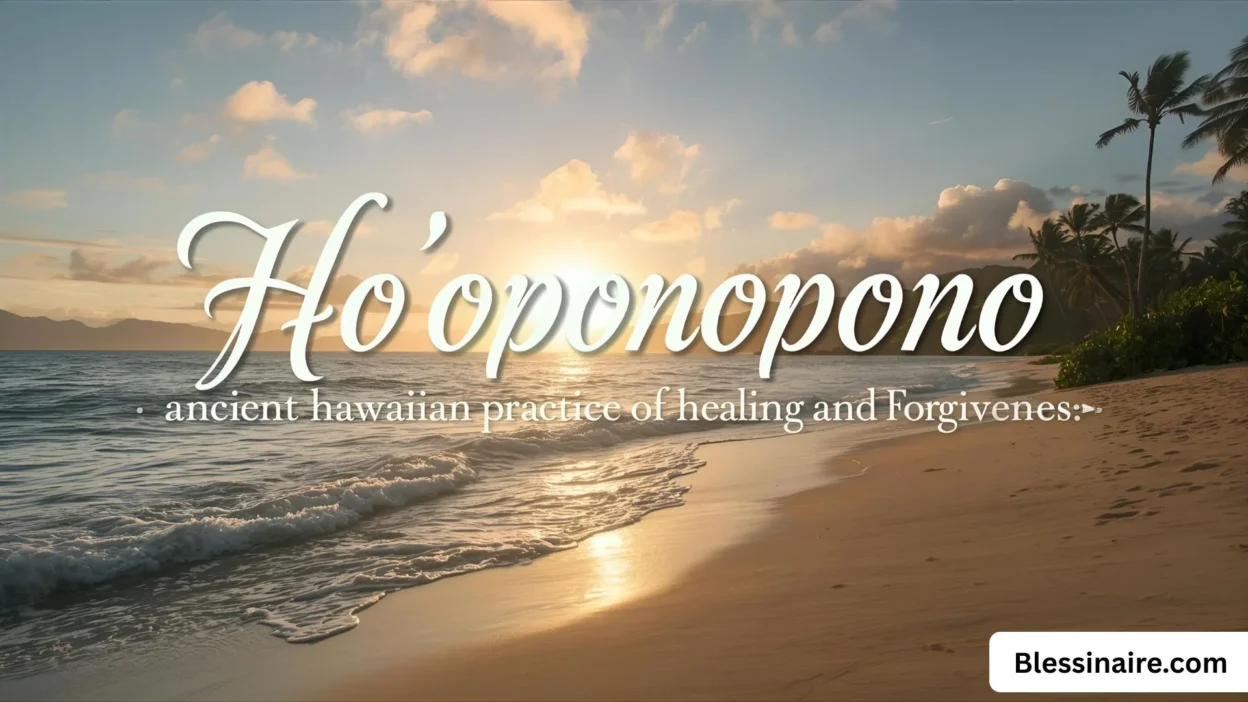Ho’oponopono, the ancient Hawaiian practice of reconciliation and forgiveness, offers a profound path to inner peace and emotional healing that has captivated seekers worldwide. This beautiful tradition, whose name literally means “to make right” or “to correct,” provides a simple yet transformative approach to resolving conflicts, releasing burdens, and restoring harmony in our relationships and within ourselves . The modern adaptation of ho’oponopono has gained significant attention through teachers like Dr. Ihaleakalā Hew Len, who famously demonstrated its power in therapeutic settings . At its heart, ho’oponopono invites us to take complete responsibility for our experiences and provides practical tools for cleaning our mental and emotional baggage. This comprehensive guide will take you through every aspect of this healing practice, from its historical roots to its modern applications, giving you everything you need to begin your own journey of forgiveness and transformation.
The Historical Roots of Ho’oponopono 📜
The rich history of ho’oponopono stretches back centuries in native Hawaiian culture, where it served as a powerful conflict resolution process within families and communities. Traditionally, the practice was overseen by elders or respected leaders and involved prayer, discussion, and ritual to restore broken relationships and address transgressions . The word itself comes from the Hawaiian “ho’o” meaning “to make” and “pono” meaning “rightness,” creating the beautiful concept of making things right—with ourselves, with others, and with the divine . This indigenous practice was not merely a psychological technique but a spiritual process deeply embedded in the Hawaiian worldview that recognized the interconnectedness of all people and the importance of maintaining balance.
In the 1970s, ho’oponopono experienced a significant transformation when Hawaiian psychiatrist Dr. Ihaleakalā Hew Len adapted the traditional group practice into a modern therapeutic method that could be performed individually . Dr. Len’s work with patients at the Hawaii State Hospital, where he reportedly helped heal an entire ward of criminally reckless patients without direct one-on-one sessions, brought international attention to the practice . His adaptation maintained the core principles of the ancient tradition while making it accessible to contemporary seekers outside of Hawaiian culture. Morrnah Simeona, recognized as a “Living Treasure” of Hawaii in 1983, further developed these teachings, creating a system focused on unifying mind, body, and spirit to erase memories that manifest as problems in our lives .
The Core Principles of Ho’oponopono 💫
The Foundation of Total Responsibility
- Taking 100% responsibility: The most fundamental principle of ho’oponopono is accepting complete responsibility for everything in our reality—not just our actions, but our thoughts, feelings, and all the experiences we attract . This doesn’t mean blaming yourself for life’s challenges, but rather recognizing your power to respond to them through inner transformation.
- All perception is projection: This concept suggests that everything we perceive externally exists internally as well . The problems we see “out there” in others or in our circumstances are actually reflections of inner issues, memories, or data that need cleaning and healing within ourselves.
- The role of memories and data: According to ho’oponopono teachings, we carry accumulated memories from our past experiences, both from this lifetime and beyond, that replay and create similar patterns and problems in our present . These memories cloud our perception and prevent us from experiencing reality clearly.
The Concept of Cleaning and Erasing
- Continuous cleaning process: Unlike many healing modalities that focus on analyzing or understanding problems, ho’oponopono emphasizes the importance of continually cleaning these memories and clearing our internal landscape . This cleaning allows us to return to our natural state of zero, where we are free from limiting beliefs and patterns.
- Connection to the Divine: Ho’oponopono recognizes an all-pervading intelligence or higher consciousness that maintains balance and sees all perspectives simultaneously . By cleaning our memories, we open ourselves to divine inspiration and allow problems to be transformed at their root.
- The goal of restoring “pono”: The ultimate aim of the practice is to restore “pono” or rightness—creating balance physically, mentally, emotionally, and spiritually . This state of balance naturally manifests as improved relationships, better health, and more harmonious life circumstances.
The Four Key Phrases of Ho’oponopono and Their Meanings 🗣️
“I’m Sorry” (Repentance and Responsibility)
- Acknowledging your role: When you say “I’m sorry” in the context of ho’oponopono, you’re not admitting fault in a conventional sense but rather acknowledging that something in your consciousness has attracted or contributed to this situation . This phrase represents taking ownership without blame, guilt, or shame .
- Beyond victimhood: This statement moves you out of a victim mentality and into a position of empowerment. By recognizing that the outer world reflects your inner state, you claim your ability to create change through inner work rather than trying to control external circumstances.
- Expanding awareness: “I’m sorry” essentially means: “I recognize that I have unconscious memories or patterns within me that have contributed to this experience, and I take responsibility for cleaning them.”
“Please Forgive Me” (Requesting Release)
- Invoking spiritual assistance: This phrase represents a humble request to the Divine, your higher power, or the universe to release and erase the negative energies, memories, and patterns that have created the situation . It’s an acknowledgment that healing requires assistance beyond your conscious mind.
- The power of surrender: “Please forgive me” expresses surrender to the idea that you cannot control outcomes through force of will alone, but can humbly request spiritual help in clearing negativity . This surrender creates space for grace and transformation beyond what you might consciously imagine.
- Cleansing effect: Self-forgiveness acts as a great cleanser, allowing you to let go of burdens, struggles, guilt, and regret . It doesn’t mean forgetting lessons learned, but rather releasing the emotional charge associated with experiences.
“Thank You” (Gratitude and Trust)
- Acknowledging the process: Expressing gratitude in ho’oponopono acknowledges that the healing process is already underway, even before you see external evidence . Thanking the Divine source means you relinquish attachment to specific results and timing.
- Cultivating trust: “Thank you” embodies faith that transmutation and forgiveness are happening in the background. This gratitude recognizes that everything in your life—both challenges and blessings—serves your growth and evolution.
- Override mechanism: Gratitude is considered a magical emotion that can override other negative emotional states . When you’re genuinely thankful for your experiences, you open to healing misunderstandings and misconceptions at their root.
“I Love You” (Unconditional Love and Connection)
- Sending love to all involved: “I love you” directs unconditional love to everyone connected to the situation—including yourself . This recognizes that all beings come from the same source of light, and extending love facilitates healing on all levels.
- Transcending separation: This phrase acknowledges the fundamental unity between you, other people, and the Divine. Love recognizes that the distinction between “inner” and “outer” is ultimately an illusion, and healing yourself contributes to healing the whole.
- Quality of self-love: The “you” in “I love you” refers to both yourself and the perceived problem . You can only love others as much as you love yourself, making self-love and self-acceptance essential components of the healing process.
How to Practice Ho’oponopono: A Step-by-Step Guide 🧘
Basic Individual Practice
- Set your intention: Begin by clarifying your purpose and creating a receptive state through deep breathing, grounding, or brief meditation . Focus on being open to healing and transformation without attachment to specific outcomes.
- Identify the problem: Bring to mind an issue, person, or situation you want to heal and transform . Clearly define what needs attention while avoiding dwelling on blame or dramatic details that reinforce negative emotions.
- Apply the four phrases: Mentally or verbally repeat the four phrases of ho’oponopono—”I’m sorry. Please forgive me. Thank you. I love you”—while holding the situation in your awareness . Repeat them until you feel inner shifts toward peace and relief.
- Let go and trust: Visualize the situation and all involved being cleansed in divine, healing light . Release attachments to solutions or timelines, having faith in the spiritual wisdom within and around you.
Practical Applications in Daily Life
- Morning routine: Start your day with ho’oponopono to clear energy and set a positive tone . Even five minutes of repeating the phrases can create a noticeable shift in your day’s quality.
- Trigger response: Use the phrases throughout the day whenever challenges arise—while driving, waiting in line, during difficult conversations, or when negative emotions surface . This turns ho’oponopono into a living practice rather than a formal meditation.
- Relationship healing: Apply the practice to heal relationships without needing the other person’s participation . Simply bring the person to mind and repeat the four phrases, trusting that the healing will benefit both of you.
- Pre-communication preparation: Try ho’oponopono before sending challenging emails, messages, or having difficult discussions . This shifts energy to be more solution-focused and less confrontational.
Deepening Your Practice
- Consistency over duration: Regular, brief practices throughout the day are often more effective than occasional long sessions. The goal is to make ho’oponopono an automatic response to life’s challenges.
- Emotional connection: While repeating the phrases mentally is effective, allowing yourself to genuinely feel the associated emotions—love, compassion, grace, and gratitude—deepens the impact .
- Using cleaning tools: Beyond the four phrases, traditional ho’oponopono incorporates various “cleaning tools” including meditation, breathing exercises, and specific affirmations that help release memories .
The Profound Benefits of Regular Ho’oponopono Practice 🌈
Emotional Healing and Stress Reduction
- Release of heavy emotions: The forgiveness process in ho’oponopono naturally releases heaviness around guilt, shame, regret, and resentment . By consistently applying the four phrases, you create a container for transforming these challenging emotions.
- Reduced anxiety and triggers: Regular practitioners report that ho’oponopono has a soothing effect that diffuses triggering emotions like anger, anxiety, sadness, and fear . The practice brings inner peace and emotional relief by addressing the root memories rather than just the surface symptoms.
- Healing of past trauma: Letting go of painful memories, especially traumatic or abusive experiences, reduces suffering and emotional baggage . While not a substitute for professional therapy in severe cases, ho’oponopono can be a valuable complementary practice that supports deeper healing work.
Improved Relationships and Conflict Resolution
- Making amends at a distance: Ho’oponopono enables making amends and clearing grievances with others without requiring their involvement or apology . This opens the door to more harmonious relationships, forgiveness, and connection, even in situations where direct communication isn’t possible.
- Family and workplace applications: Documented cases show that family therapy incorporating ho’oponopono has healed rifts between family members, while workplaces that implemented the practice report less conflict and improved teamwork .
- Recognized conflict resolution method: The practice is now recognized as a legitimate alternative form of conflict resolution, taught worldwide and even used in some family court systems . In 2000, the Hawaii State Legislature recognized its effectiveness for alternative dispute resolution .
Personal Growth and Self-Awareness
- Increased self-awareness: Ho’oponopono builds awareness around how your unresolved memories and energy impact what manifests in your life . As you take responsibility for transmuting negativity, you empower your personal development.
- Freedom from control patterns: Growth emerges from examining thought patterns, letting go of resentment and the need to control external circumstances . There is profound freedom in owning your inner terrain rather than trying to manipulate outer conditions.
- Alignment with purpose: Many practitioners find that as they clear limiting memories and beliefs, they naturally align with their true purpose and experience more synchronicities and meaningful connections in their lives.
Ho’oponopono in Modern Therapy and Professional Settings 💼
Integration with Psychology and Mental Health
While originating from indigenous spirituality, ho’oponopono shares significant overlaps with modern psychology. The practice of taking 100% responsibility reflects principles in cognitive behavioral therapy (CBT) around identifying cognitive distortions that color one’s reality negatively . The constant self-correction of thoughts and memories correlates to present-moment mindfulness practices, preventing people from staying stuck in past regrets or future worries. Additionally, the releasing of painful emotions in ho’oponopono mirrors emotional processing techniques in therapies like Dialectical Behavior Therapy (DBT), while visualizing solutions and affirming gratitude taps into principles of positive psychology .
Clinical Applications and Research
Research has begun to explore the therapeutic benefits of ho’oponopono, particularly in stress-related conditions. One study conducted with women having pre-hypertension or hypertension found that those who participated in a ho’oponopono class intervention showed statistically significant reductions in blood pressure and perceived stress levels compared to the control group . The intervention involved a 4-hour class instruction on the Hawaiian strategy, including how to use various “cleaning tools” such as meditation, breathing exercises, and positive affirmations . Participants were instructed to practice the process for 12 weeks using printed booklets as reminders of the tools taught in class, demonstrating how this ancient practice can be structured into a modern therapeutic protocol.
Professional and Workplace Applications
- Legal and conflict resolution fields: Attorneys and mediators have begun applying ho’oponopono in their professional lives to manage stress, increase emotional maturity, achieve mental clarity, and feel more positive . The practice is particularly valuable in high-conflict situations where traditional approaches may reach impasses.
- Healthcare settings: Nurses, therapists, and healthcare providers have integrated ho’oponopono into their self-care routines and even patient interactions to reduce burnout and improve therapeutic outcomes . The principles align well with the growing emphasis on holistic care that addresses mental, emotional, and spiritual dimensions of health.
- Business and leadership: Corporate environments have started implementing ho’oponopono principles to improve workplace culture, reduce conflict, and enhance team morale . Leaders who practice these principles often report better decision-making and improved team dynamics.
Addressing Common Challenges and Misconceptions ❓
Navigating Common Criticisms
- “Taking responsibility seems unfair”: One of the most common criticisms of ho’oponopono is that taking full responsibility for every situation seems unrealistic or unfair, especially when others objectively cause harm . However, the practice focuses on taking charge of your own forgiveness and healing regardless of other factors, with emphasis on self-care rather than blame.
- “Surrender contradicts goal-setting”: The complete surrender of outcomes in ho’oponopono appears to contradict society’s emphasis on setting goals and manifesting desires . Yet this surrender is what allows the universe to step in and guide events, often relieving self-imposed stress around forcing or controlling situations.
- “Oversimplification concerns”: Some critics view the ritualized phrases as overly simplified or magical thinking without real-world change . Practitioners clarify that the mantras provide a framework for taking internal action, not replacing external efforts, by bringing subconscious memories into conscious awareness for clearing.
- “Religious compatibility”: Certain religious groups have labeled ho’oponopono as New Age or incompatible with their faith . Interestingly, Dr. Len was a devout Catholic who saw spiritual alignment in the practice, and many Christians find it complements their faith by encouraging personal responsibility alongside divine grace.
Overcoming Practice Obstacles
- Dealing with resistance: When you encounter resistance to practicing ho’oponopono, simply apply the phrases to the resistance itself. Say “I’m sorry, please forgive me, thank you, I love you” to your own reluctance or skepticism.
- Managing expectations: Beginners often expect immediate, dramatic results and become discouraged when changes aren’t instantly visible. Ho’oponopono works on subtle levels first, with external changes often appearing gradually as internal cleaning progresses.
- Finding time: The beauty of ho’oponopono is that it doesn’t require special settings or extended time commitments. You can practice while commuting, during breaks, or even in the middle of challenging situations without anyone noticing.
Ho’oponopono and Cultural Context: Respecting Origins While Embracing Universal Application 🌍
Honoring Hawaiian Heritage
While ho’oponopono has gained worldwide popularity, it’s important to acknowledge and respect its origins in native Hawaiian culture. The traditional practice was deeply embedded in the social and spiritual fabric of Hawaiian life, with specific protocols and community contexts that differ from modern individual adaptations . Contemporary teachers and practitioners increasingly emphasize the importance of honoring this heritage while making the core principles accessible to people across cultures. This includes acknowledging the Hawaiian sources of the practice, using the terminology accurately, and understanding the cultural framework from which it emerged.
Modern Adaptations and Universal Principles
The evolution of ho’oponopono from a community-based ritual to an individual practice represents both a departure from tradition and an adaptation that has allowed its healing potential to reach global audiences . While purists might argue that something is lost in translation, the widespread adoption suggests that the core principles of responsibility, forgiveness, and reconciliation address universal human needs. The modern version developed by teachers like Morrnah Simeona and Dr. Ihaleakalā Hew Len maintains the essence of the traditional practice while framing it in language and applications that resonate with contemporary seekers . This balancing act between cultural preservation and universal application continues to evolve as ho’oponopono spreads worldwide.
Getting Started with Ho’oponopono: Practical Tips for Beginners 🌱
Building a Sustainable Practice
- Start small and simple: Begin with just a few minutes each day, repeating the four phrases while breathing deeply. You don’t need to understand everything perfectly to start experiencing benefits.
- Use reminders: Place sticky notes with the four phrases in visible locations—your bathroom mirror, computer monitor, or car dashboard—to remind yourself to practice throughout the day.
- Create association triggers: Link your ho’oponopono practice to existing habits, such as before checking your phone in the morning, during your commute, or while waiting for your computer to start up.
- Keep a practice journal: Document your experiences, insights, and shifts—both internal and external—as you maintain consistent practice. This helps you recognize subtle progress and stay motivated.
Deepening Your Understanding
- Explore resources: Read books by reputable teachers like Dr. Ihaleakalā Hew Len, Joe Vitale, and others who present authentic ho’oponopono teachings while respecting its cultural origins .
- Connect with community: While ho’oponopono is primarily an individual practice, connecting with others on the same path through online forums, local groups, or workshops can provide support and shared learning.
- Be patient and persistent: Like any meaningful practice, ho’oponopono yields its deepest benefits through consistent application over time. Trust the process even when immediate results aren’t visible.
Frequently Asked Questions About Ho’oponopono ❓
Do I need to believe in a specific higher power for ho’oponopono to work?
No, ho’oponopono doesn’t require adherence to any specific religious belief. The practice can be directed toward whatever concept of higher power, universe, or divine intelligence resonates with you, including your own highest self or the intelligence of life itself. The effectiveness comes from the sincerity of your intention rather than specific theological beliefs.
How long does it take to see results from practicing ho’oponopono?
The timeframe for experiencing results varies greatly depending on the individual and the situation. Some people notice immediate shifts in their inner state after just one session, while more complex issues may require consistent practice over weeks or months. The key is persistence rather than focusing on specific timelines.
Can ho’oponopono be used alongside other healing modalities?
Absolutely. Ho’oponopono complements most therapeutic approaches, psychological treatments, and spiritual practices beautifully. Many people combine it with therapy, meditation, energy healing, and other personal development work without conflict. Its non-invasive nature makes it adaptable to various healing frameworks.
Is it necessary to understand why I have certain problems to use ho’oponopono effectively?
Not at all. One of the unique aspects of ho’oponopono is that it works directly with the energy and memories behind problems without requiring intellectual analysis or understanding of their origins. The cleaning process addresses issues at their root, whether you consciously understand that root or not.
Can I practice ho’oponopono on behalf of others?
Yes, this is one of the beautiful aspects of the practice. You can apply ho’oponopono to situations involving other people, including family members, friends, or even global issues. The understanding is that by cleaning your own perceptions and memories related to these situations, you contribute to healing that extends beyond yourself.
Conclusion: Embracing the Journey of Ho’oponopono ✨
Ho’oponopono offers a profound yet beautifully simple path to emotional healing, spiritual growth, and personal transformation that has stood the test of time. This ancient Hawaiian practice of reconciliation and forgiveness teaches us the radical power of taking complete responsibility for our experiences while providing practical tools for cleaning the memories that create suffering. Through its four powerful phrases—”I’m sorry, please forgive me, thank you, I love you”—ho’oponopono guides us back to our natural state of balance, peace, and connection. Whether you’re seeking to heal relationships, release emotional burdens, or simply navigate life’s challenges with greater grace, this timeless practice offers a sustainable approach to creating positive change from the inside out. The journey of ho’oponopono begins with a single repetition of these healing words and continues as a lifelong path of cleaning, awakening, and returning to the truth of who you really are.

I write to share spiritual blessings that inspire gratitude, strengthen faith, and bring peace to the heart. My goal is to help others see each day as a sacred gift filled with love and light.





